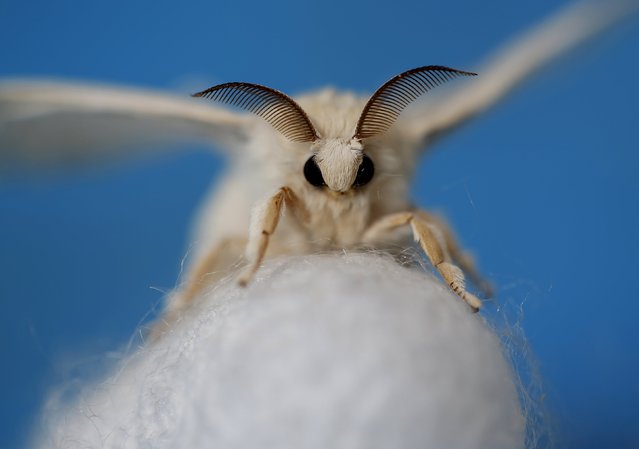
A silkmoth that has hatched out of its cocoon is seen at the Campoverde cooperative, Castelfranco Veneto, Italy June 4, 2015. Despite having wings, the adult moth cannot fly. Clusters of silkworms munch on piles of locally-grown mulberry leaves in a white marquee in Italy's northern Veneto region. They are nourishing hopes of a revival of Italy's 1,000 year-old silk industry. (Photo by Alessandro Bianchi/Reuters)

A late-developing silkworm is seen as it arrives to munch on piles of locally-grown mulberry at the CRA agricultural research unit in Padua, Italy, June 4, 2015. Clusters of silkworms munch on piles of locally-grown mulberry leaves in a white marquee in Italy's northern Veneto region. (Photo by Alessandro Bianchi/Reuters)

Two late-developing silkworms are seen as they munch on piles of locally-grown mulberry at the CRA agricultural research unit in Padua, Italy, June 4, 2015. (Photo by Alessandro Bianchi/Reuters)

A late-developing silkworm is seen as it munches on piles of locally-grown mulberry at the CRA agricultural research unit in Padua, Italy, June 4, 2015. (Photo by Alessandro Bianchi/Reuters)

Two late-developing silkworms are seen as they munch on piles of locally-grown mulberry leaves at the CRA agricultural research unit in Padua, Italy, June 4, 2015. (Photo by Alessandro Bianchi/Reuters)
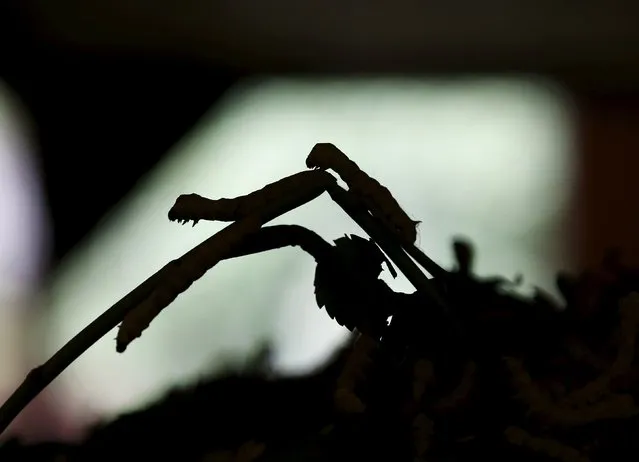
Two late-developing silkworms are seen as they munch on piles of locally-grown mulberry leaves at the CRA agricultural research unit in Padua, Italy, June 4, 2015. (Photo by Alessandro Bianchi/Reuters)
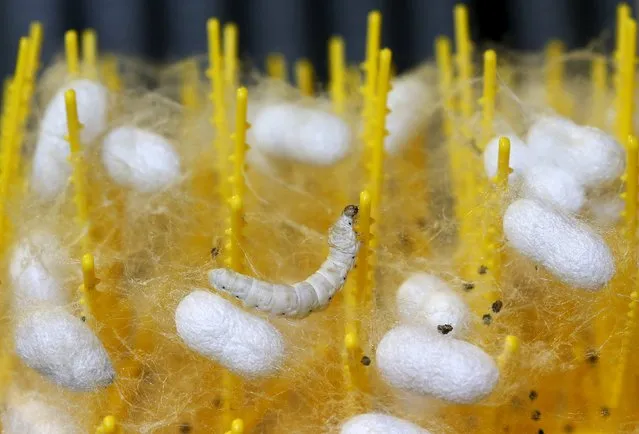
A late-developing silkworm sits suspended in the fibres its fellow larvae released as they spun their own cocoons, at the CRA agricultural research unit in Padua, Italy, June 4, 2015. (Photo by Alessandro Bianchi/Reuters)
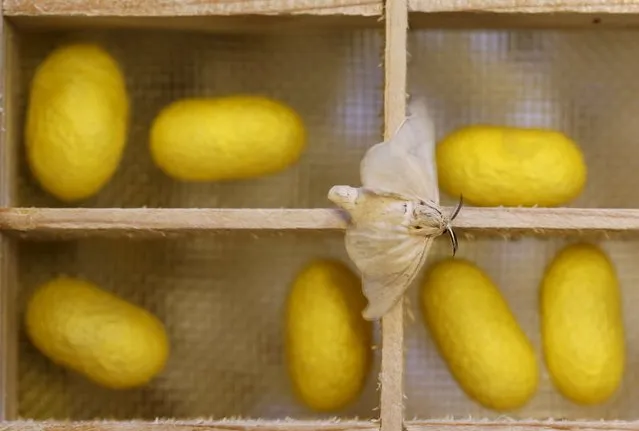
A silkmoth sits on a box of silkworm cocoons like the one from which it has recently emerged, at the CRA agricultural research unit in Padua, Italy, June 4, 2015. The Padua research unit houses some 200 different genetic types of silkworm. (Photo by Alessandro Bianchi/Reuters)

A silkmoth sits in a box of silkworm cocoons like the one from which it has recently emerged, at the CRA agricultural research unit in Padua, Italy, June 4, 2015. (Photo by Alessandro Bianchi/Reuters)
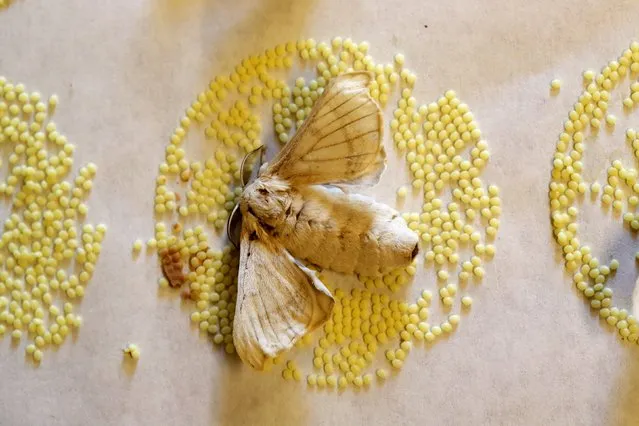
A silkmoth is seen at the CRA research unit in Padua, Italy, June 4, 2015. Despite having wings, the adult moth cannot fly. (Photo by Alessandro Bianchi/Reuters)
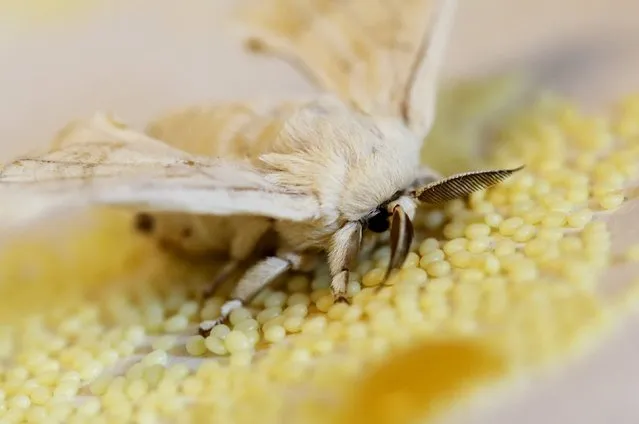
A silkmoth is seen at the CRA research unit in Padua, Italy, June 4, 2015. (Photo by Alessandro Bianchi/Reuters)
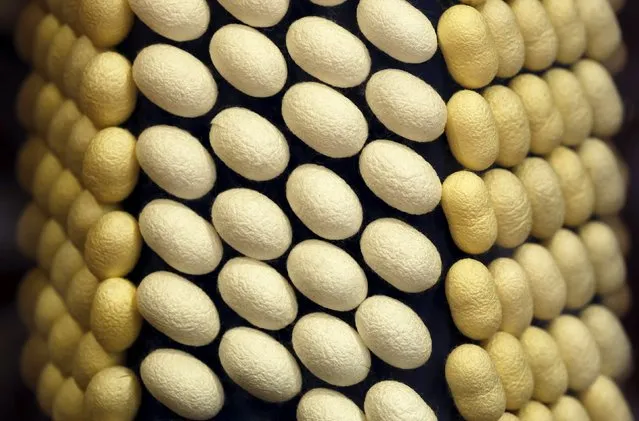
Silk cocoons are displayed in the glass jars in the museum at the CRA agricultural research unit in Padua, Italy, June 4, 2015. (Photo by Alessandro Bianchi/Reuters)
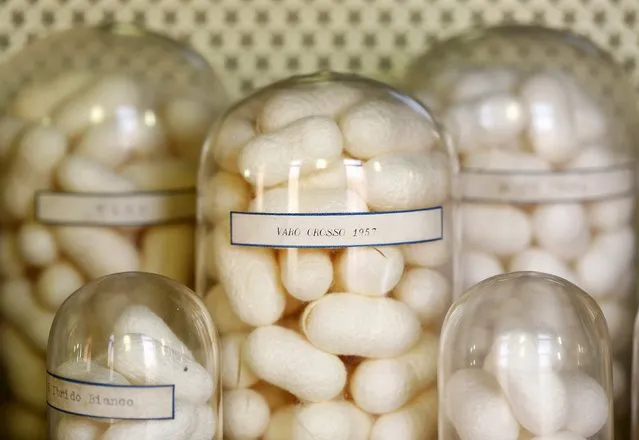
Silk cocoons are displayed in glass jars in the museum at the CRA agricultural research unit in Padua, Italy, June 4, 2015. (Photo by Alessandro Bianchi/Reuters)
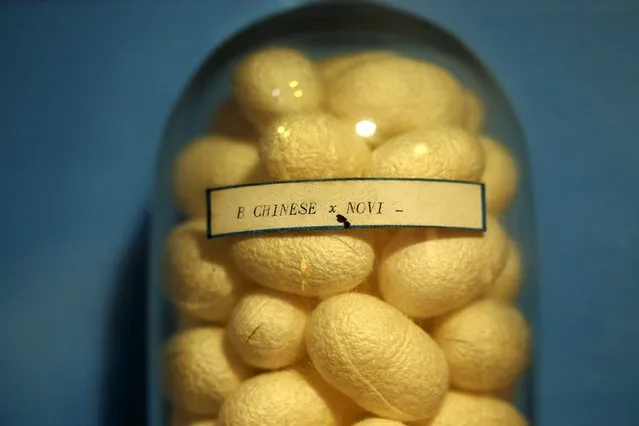
Silk cocoons are displayed in a glass jar in the museum at the CRA agricultural research unit in Padua, Italy, June 4, 2015. (Photo by Alessandro Bianchi/Reuters)
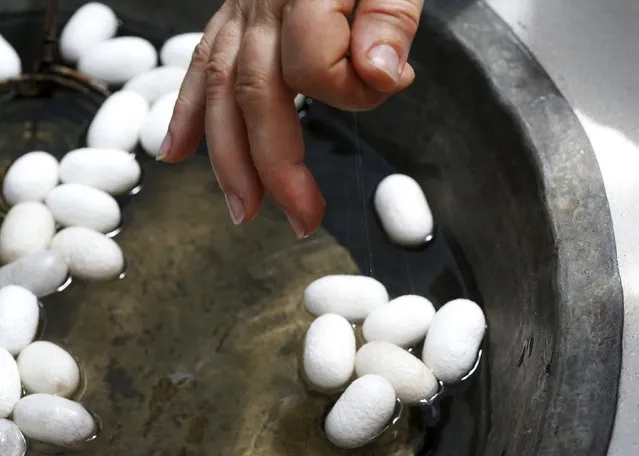
A woman spins a thread of silk from a cocoon on an antique loom at the Campoverde cooperative in Castelfranco Veneto, Italy, June 4, 2015. (Photo by Alessandro Bianchi/Reuters)

A frame spins a thread of silk from a cocoon on an antique loom at the Campoverde cooperative in Castelfranco Veneto, Italy, June 4, 2015. (Photo by Alessandro Bianchi/Reuters)
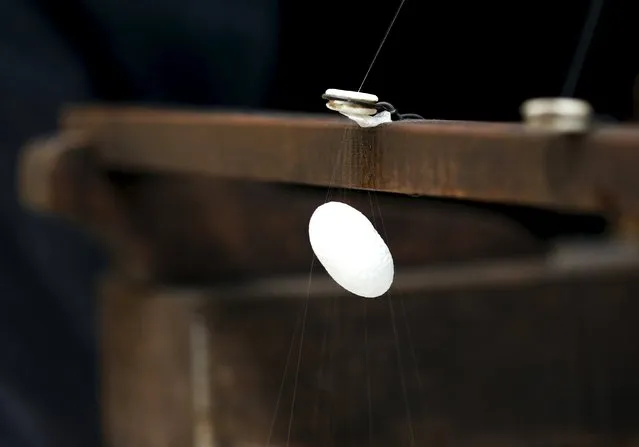
A frame spins a thread of silk from a cocoon on an antique loom at the Campoverde cooperative in Castelfranco Veneto, Italy, June 4, 2015. (Photo by Alessandro Bianchi/Reuters)
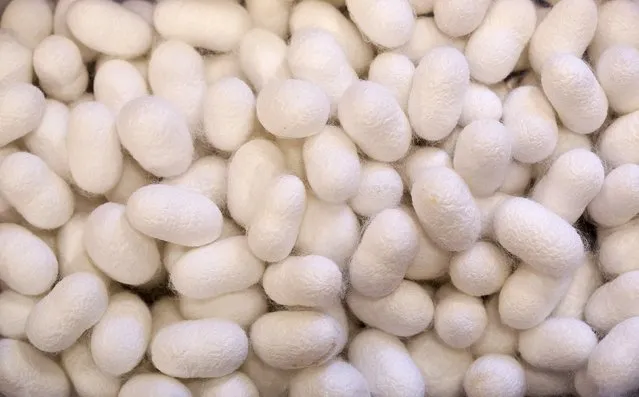
Silkworm cocoons are seen stored in a box at the CRA agricultural research unit in Padua, Italy, June 4, 2015. (Photo by Alessandro Bianchi/Reuters)
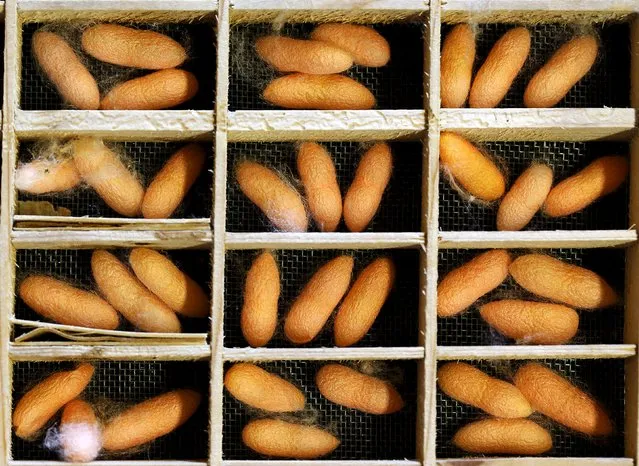
Silkworm cocoons are seen in a box at the CRA agricultural research unit in Padua, Italy, June 4, 2015. The Padua research unit houses some 200 different genetic types of silkworm. (Photo by Alessandro Bianchi/Reuters)
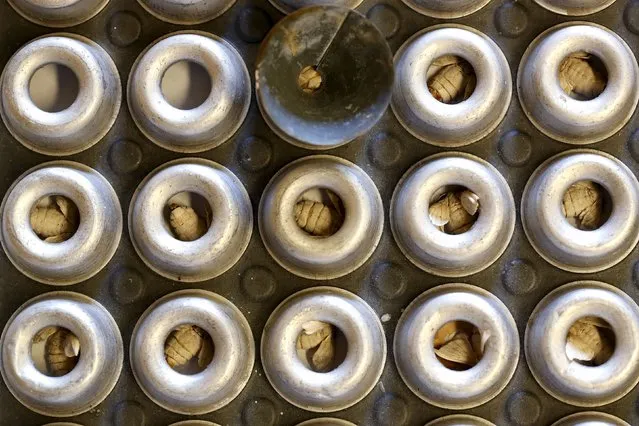
Silkmoths that have hatched out of their cocoons are seen at the CRA research unit in Padua, Italy, June 4, 2015. Despite having wings, the adult moth cannot fly. (Photo by Alessandro Bianchi/Reuters)
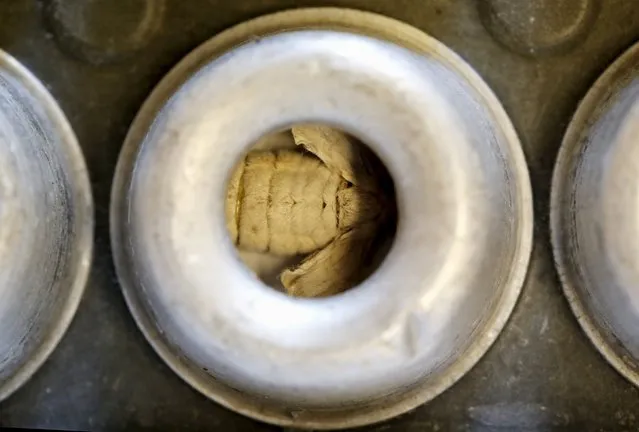
A silkmoth that has hatched out of its cocoon is seen at the CRA research unit in Padua, Italy, June 4, 2015. (Photo by Alessandro Bianchi/Reuters)
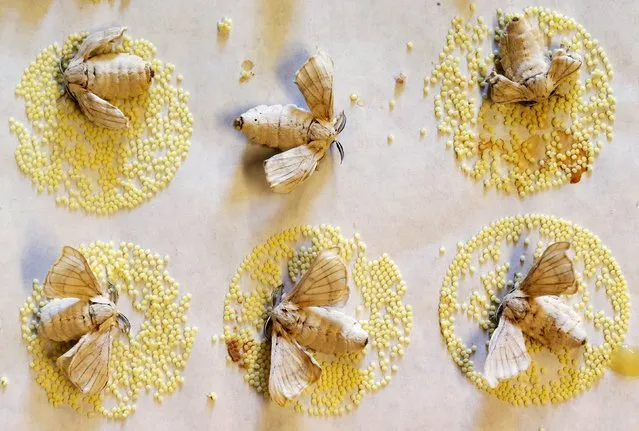
Silkmoths are seen at the CRA research unit in Padua, Italy, June 4, 2015. (Photo by Alessandro Bianchi/Reuters)
18 Jul 2015 13:06:00,
post received
0 comments
